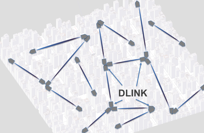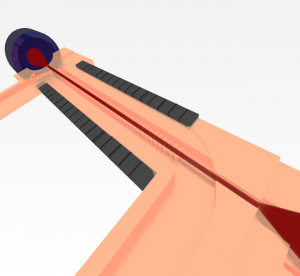 EPSRC Radio Frequency and Microwave Device Engineering for a Prosperous Nation
EPSRC Radio Frequency and Microwave Device Engineering for a Prosperous Nation
Why DLINK
The extraordinary increase of wireless data traffic by smartphones and laptops, virtual reality, billions of IoTs or Industry 4.0 infrastructure need 5G, small cell densification and reduction of digital divide. High throughput connectivity everywhere is a fundamental requirement to support the growing data demand and the evolution of future wireless communication market. Affordable wireless networks with fibre data rate are needed.
Wireless links with multi-gigabit (Gb/s) distribution at millimetre waves have been demonstrated up to 400 GHz. However, the strong atmosphere attenuation at the increase of frequency and limitations of the present semiconductor-based millimetre wave technology limit their potentiality. E-band wireless links with 2 GHz bandwidth and theoretical few Gb/s are already in the market, but large antenna footprint and low transmission power are probably preventing wider adoption.
The portion of the spectrum above 100 GHz includes numerous wide bands which are presently unused, and could support tens of Gb/s, if adequate millimetre wave technology were available. In particular, the D-band (141 – 174.8) has about 28 GHz split in three sub-bands.

The Challenge
The DLINK project aims to bring the UK at the forefront of millimetre wave wireless technology through the realisation of the first high capacity link at D-band with unprecedented performance, to provide 45Gb/s, over 1 km range, and with 99.99% availability in ITU rain zone K (typical of UK and Europe). The DLINK system includes a high power vacuum traveling wave tube (TWT) of new generation driven by a novel resonant tunnelling diode (RTD) transmitter with an integrated vector modulator. The system will be demonstrated in Frequency Division Duplex (FDD), with two bands of 10 GHz each to provide about 45 Gb/s data rate. The high performance of DLINK is enabled by traveling wave tubes as amplifiers, with about 10W output power, which is more than one order of magnitude than solid state amplifiers at the same frequency. The TWT working mechanism is based on the transfer of energy from a high energy electron beam, flowing in a waveguide with high level of vacuum, to the electric field generated by the input signal. No D-band TWTs are available in the market. Substantial challenges must be solved for an affordable microfabrication of mm-wave waveguides, due to small dimensions and three dimensional shapes. The transmitter will be an RTD oscillator with very low phase noise to support QAM modulation generated by an on-chip PIN diode vector modulator. The DLINK system includes two transmitters, one for each FDD channel, integrating a RTD oscillator/transmitter, a TWT and an antenna. For the first time, the property of a transmission link with 20 GHz bandwidth above 100 GHz will be investigated by field tests at BT.
The DLINK project has a strong industry focus. It is a collaboration between Lancaster and Glasgow Universities with the strategic support of the wireless communication industry full chain, from devices to end users: IQE (semiconductor wafers), Filtronic (mm-wave links), Teledyne e2v (mm-wave TWT), Nokia (system manufacturer), Intel (chip manufacturer), BT (UK main network operator and end user).

The high impact of the project will enable new architectures of wireless high capacity networks by mesh of high data rate links at mm-waves. The DLINK project has the ambition to fully contribute to “Connected Nation”, one of the four Prosperous Outcomes and to benefit other numerous ambitions of the Prosperous Nation outcomes. DLINK involves researchers and PhD students of two leading research groups and a number of industry partners that will work together for the success of the project, with a long term strategy for future industry exploitation. A particular attention is devoted to growth of talent, improving the gender balance in the millimetre wave technology sector highlighting role models in the Lancaster and Glasgow teams.
(Photo Pixabay)